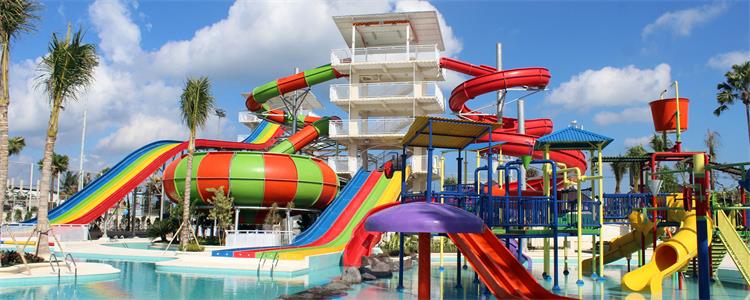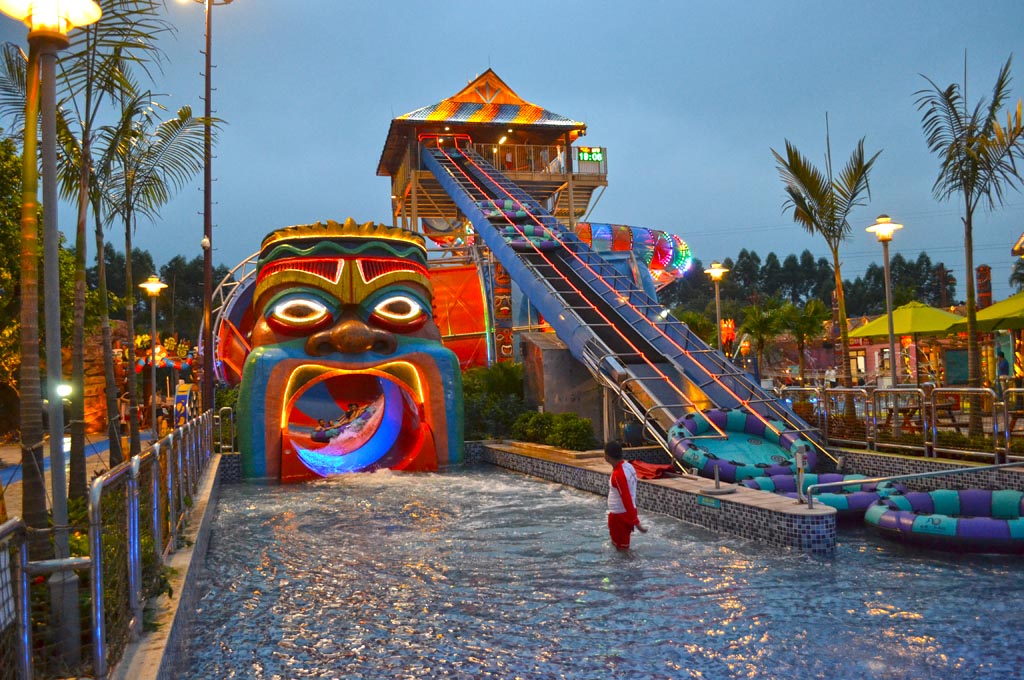2018 Development Trend of Water Park Equipment Industry
Water park equipment industry is rapidly evolving due to advancements in science and technology, as well as changes in consumer demand. These shifts will bring new opportunities and challenges to the water park industry in 2018. How will water parks transform? The author’s views in this article are as follows:
1. Polarisation
Polarisation means that the positioning of water parks will develop between maximisation and minimisation. Some water parks will evolve into resort areas combining water parks and land parks. Lanchao has the advantage of a mature industrial chain including hotels, catering, entertainment, and retail. Tourists generally plan an n-day holiday trip. Another segment of water parks will be located within an hour’s drive from the market, offering more precise and distinctive characteristics. These parks will delve deeper into cultural tourism to meet the fragmented entertainment needs of nearby residents.
2. Intelligentisation
This focuses on the seamless connection between online and offline experiences. One should build more efficient and convenient booking channels while enhancing online and offline interactions. Real-time sharing of park conditions, online visual simulation tours, and online displays of park products can all guide tourists’ choices. Additionally, the development of intelligent terminals, such as smart wristbands provided free of charge to visitors, will allow tourists to manage all their needs, such as stored value, catering reservations, park guides, and queue status queries. Finally, payment methods will become smarter, incorporating cash, credit cards, Alipay, Tenpay, and futuristic options like face, fingerprint, and iris recognition. In the future, water parks will prioritise tourist satisfaction as the highest evaluation standard.
3. Digitisation
This involves using data to inform decisions. The most direct approach is to gather extensive data through various channels to analyse customer needs and develop targeted marketing strategies. Companies should use long-term data accumulation to predict catering sales in the park based on weather conditions and reservations, and allocate staff accordingly. Furthermore, in-depth industry-wide data analysis, as well as national-level big data analysis, will help understand changes in consumer groups, particularly the younger generation, and address new challenges posed by single, low birth rate, and middle-aged consumer groups.
4. Customisation
Customisation involves transforming business models. While transforming the Internet may seem simple, it is more challenging to implement. The key is to shift the mindset to focus on users rather than customers. Users generally exhibit four characteristics: they may not necessarily consume immediately; they consistently use your service or product; they establish a direct connection with you; and they regularly communicate with you. By converting customers into users, water parks can drive other industries and uncover potential commercial value.

Water park equipment is the core of any water park. The design and layout of water park equipment are crucial for successful operations. Major water park equipment manufacturers, such as Lanchao, are continuously developing new products or upgrading existing ones. For instance, the Big Horn slide has evolved into a tornado slide, and rainbow slides have transformed into octopus slides. Swimming equipment is also rapidly updated to keep pace with changing trends.
All in all, in 2018, water park equipment manufacturers should focus on the following:
1. Water park planning and design should be detailed and based on customer preference data to meet customer needs to the greatest extent;
2. Water park equipment product design should be innovative. Mainstream products need to enhance amusement functions and visual appeal;
3. The quality requirements for water park equipment should be more stringent, and construction and installation management should be more comprehensive;
4. Diversification is key. Other supporting facilities should be planned and negotiated with the owner, and after-sales service should be more thorough;
5. Pay attention to policy changes and collaborate with owners to ensure smooth operations.

Related Post:
2018 development trend of water park equipment industry
The development trend of water amusement equipment
Great development of water park equipment industry with broad prospects
What kind of water park equipment is recommended in 2018?
